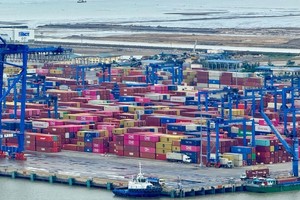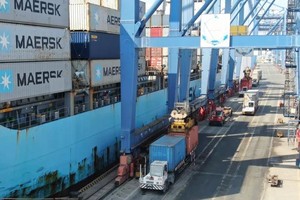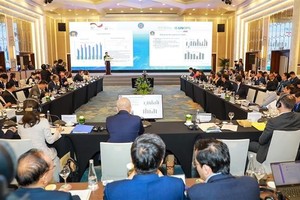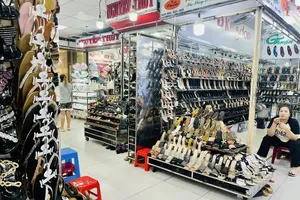The State Bank of Viet Nam (SBV), countering Moody's valuation this week, yesterday reaffirmed that the bad debt ratio of the banking system was 3.63 per cent last December.
In a report released on Tuesday, Moody's Investor's Services maintained its negative outlook on Viet Nam's banking system, "where the problem assets ratio comprises at least 15 per cent of total assets, significantly above the 4.7 per cent non-performing loan ratio reported by the State Bank of Viet Nam in October 2013."
However, under standards governed by the central bank, the bad debt ratio of the system increased from 4.08 per cent in 2012 to 4.73 per cent in October 2013, and the ratio was reduced to 3.63 per cent last December due to systematic efforts and the constructive development of the economy.
SBV also countered that the bad debt ratio would be no more than 9 per cent of total assets, even while including bad debts restructured under Decision No 780/QD-NHNN, dated April 23, 2012.
Decision No 780 on the classification of restructured loans was designed to support enterprises obtaining loans at lower interest rates. However, this support carries the potential risk of increasing bad debts if the economy declines.
According to the SBV website, since there is no consistent standard for clarifying debts, it's normal for different agencies to publish different bad debt ratios, and creditworthiness ratings from non-administrative agencies should be considered reference sources.
SBV also noted that Moody's evaluation was prepared using their own methods, criteria and information sources. Meanwhile, the central bank's statistics were produced with more reasonable official sources under current legal regulations.
In the context of stagnant production, a quiet property market, and the weak repayment capacity of borrowers, the pressure of bad debts is noticeable. The central bank considered the bad debt reduction to be quite modest.
On the other hand, SBV stressed that the figures showcased the strong efforts of the system in handling bad debts. Banks have restructured loans to make it easier for enterprises to access capital, to take strict control over operation costs, to actively collect debts and set up risk provision funds, to improve credit quality and to constrain new bad debts.
The government aims to bring the bad debt ratio to 3-4 per cent of total lending by the end of 2015. This year, state-owned Viet Nam Asset Management Company (VAMC) plans to buy VND70-100 trillion (US$3.33-4.76 billion) NPLs through special bonds. However, there will be pressure to sell and handle the purchased debts in 2014. Therefore, VAMC is preparing a plan for debt trading at market prices.
Viet Nam has one of Asia's highest ratios of NPLs, which has troubled the economy and led to a tightening of the credit policy required to boost consumer spending and keep businesses afloat.
























